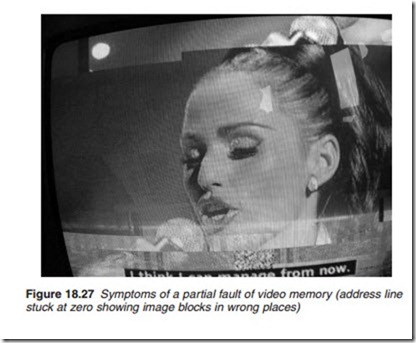Memory faults and their symptoms
Memory chips perform a number of vital functions in a DTV decoder box including
● Flash: start-up and processing routines for central microprocessing/ microcontroller, transport processor and MPEG decoder.
● DRAM/SDARM/DDRAM: micro memory
● SDARM/SRAM: transport packet storage at the demux stage
● SDRAM: video I, P and B frames storage at the MPEG decoding stage
● SDRAM: audio segment storage at the MPEG decoding stage
● SDRAM/DRAM: video buffering
Memory chips may fail either totally or partially. Partial failure may be caused by a corruption of one or more cells; an address or data bus line stuck at 1 or 0, or shorted pins. A fault, fatal or partial, in Flash or NVRAM would cause the DTV box to go into standby. A fatal fault in the transport processor or MPEG decoder memory chips would result in total picture and sound failure. However, a partial fault would display a constantly changing pattern of picture and sound break-up. The picture break-up is different from the pixelisation caused by a high BER count. In the latter case, all the picture parts are in the correct place, block by block, but some blocks are frozen or obliterated while in the former case, all the picture blocks are clearly present, but some blocks are in the wrong position (Figure 18.27) and/or repeated as illustrated in Figure 18.28.

